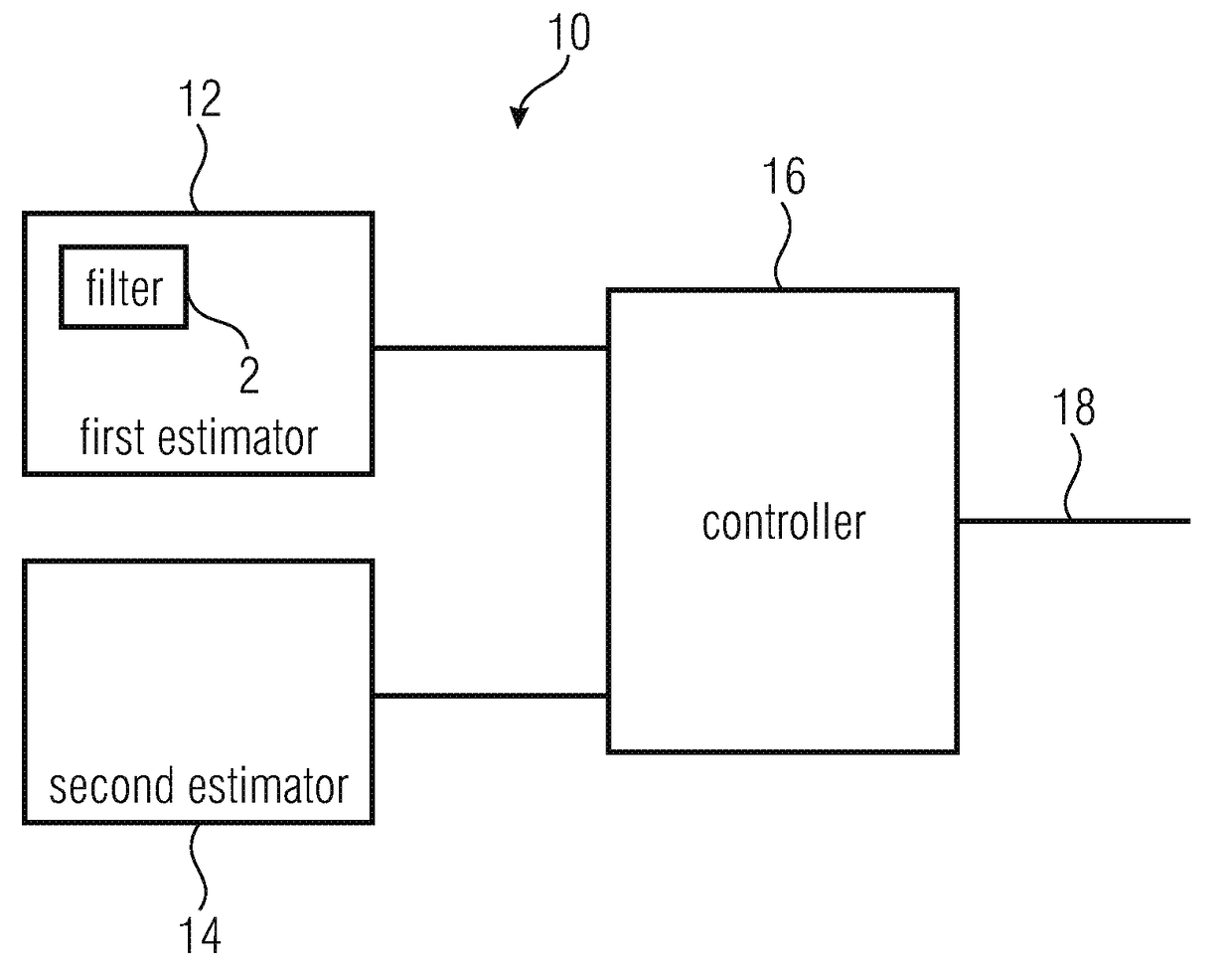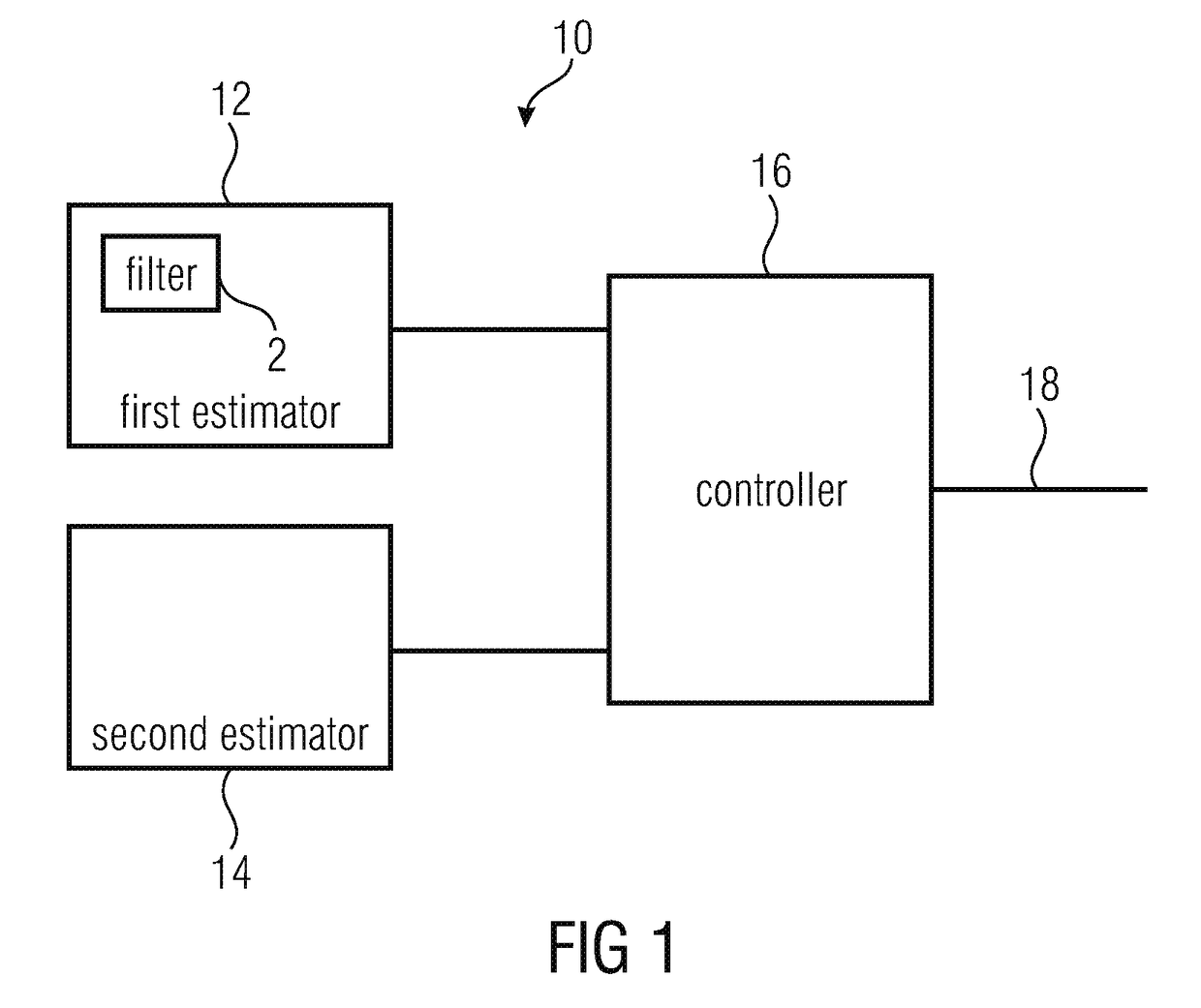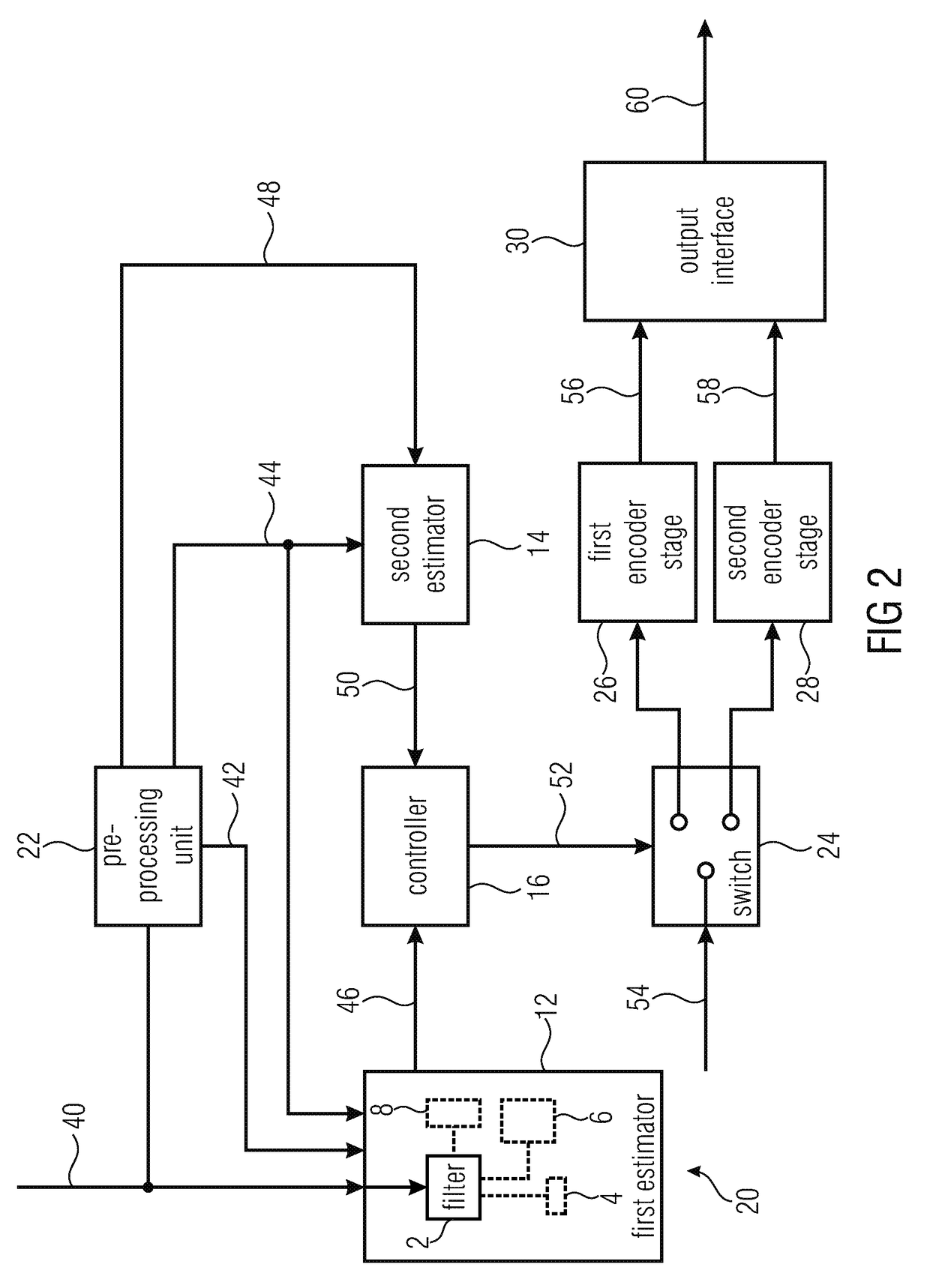Apparatus and method for selecting one of a first encoding algorithm and a second encoding algorithm using harmonics reduction
a harmonic reduction and encoding algorithm technology, applied in the field of audio coding, can solve the problems of strong artifacts and necessitate a significant amount of complexity, and achieve the effects of reducing complexity, improving performance, and improving mode selection
- Summary
- Abstract
- Description
- Claims
- Application Information
AI Technical Summary
Benefits of technology
Problems solved by technology
Method used
Image
Examples
Embodiment Construction
[0027]In the following description, similar elements / steps in the different drawings are referred to by the same reference signs. It is to be noted that in the drawings features, such as signal connections and the like, which are not necessitated in understanding the invention have been omitted.
[0028]FIG. 1 shows an apparatus 10 for selecting one of a first encoding algorithm, such as a TCX algorithm, and a second encoding algorithm, such as an ACELP algorithm, as the encoder for encoding a portion of an audio signal. The apparatus 10 comprises a first estimator 12 for estimating a SNR or a segmental SNR of the portion of the audio signal as first quality measure for the signal portion is provided. The first quality measure is associated with the first encoding algorithm. The apparatus 10 comprises a filter 2 configured to receive the audio signal, to reduce the amplitude of harmonics in the audio signal and to output a filtered version of the audio signal. The filter 2 may be inter...
PUM
 Login to View More
Login to View More Abstract
Description
Claims
Application Information
 Login to View More
Login to View More - R&D
- Intellectual Property
- Life Sciences
- Materials
- Tech Scout
- Unparalleled Data Quality
- Higher Quality Content
- 60% Fewer Hallucinations
Browse by: Latest US Patents, China's latest patents, Technical Efficacy Thesaurus, Application Domain, Technology Topic, Popular Technical Reports.
© 2025 PatSnap. All rights reserved.Legal|Privacy policy|Modern Slavery Act Transparency Statement|Sitemap|About US| Contact US: help@patsnap.com



